September 23, 2025

The article titled "10 Benefits of ABA Education for Enhancing Child Development" presents compelling insights into the advantages of Applied Behavior Analysis (ABA) education in fostering various aspects of child development.
Research indicates a significant demand for Board Certified Behavior Analysts (BCBAs), underscoring the importance of ABA education in enhancing communication, social skills, and academic performance.
These findings demonstrate the critical role of ABA in promoting overall child development. By highlighting substantial improvements in these areas, the article establishes ABA education as an essential tool for parents and educators seeking to optimize child growth.
The field of Applied Behavior Analysis (ABA) education is rapidly transforming the landscape of child development, offering a multitude of benefits that extend far beyond traditional learning methods.
With a projected 25% increase in demand for Board Certified Behavior Analysts (BCBAs) by 2026, the urgency to understand how ABA can enhance communication, social skills, and overall academic success is more critical than ever.
However, as opportunities for growth expand, so too do the questions surrounding the effectiveness and ethical implications of these practices.
How can families and educators ensure they are leveraging ABA strategies to foster meaningful development while maintaining integrity and quality in education?
Hire ABA plays a pivotal role in connecting Board Certified Behavior Analysts (BCBAs) with premier job opportunities in the rapidly expanding field of Applied Behavior Analysis (ABA) therapy. Did you know that the by 25% by 2026? Job postings for these professionals have increased by 9.2 times from 2017 to 2023, totaling over 65,300 postings in 2023. This surge in demand highlights the importance of a .
Hire ABA not only simplifies recruitment but also enhances the overall experience for candidates through . By submitting their resumes, BCBAs receive tailored evaluations of their experience and career goals. This ensures they are matched with roles that align with their expertise and aspirations. How can you ensure that your candidates are the perfect fit for your organization?
Employing , Hire ABA recognizes opportunities that correspond with candidates' abilities, preferences, and preferred locations. This targeted approach , significantly contributing to addressing the . By providing comprehensive support, Hire ABA emerges as an essential resource in the field. Don't miss out on the opportunity to —leverage Hire ABA to meet your hiring needs effectively.
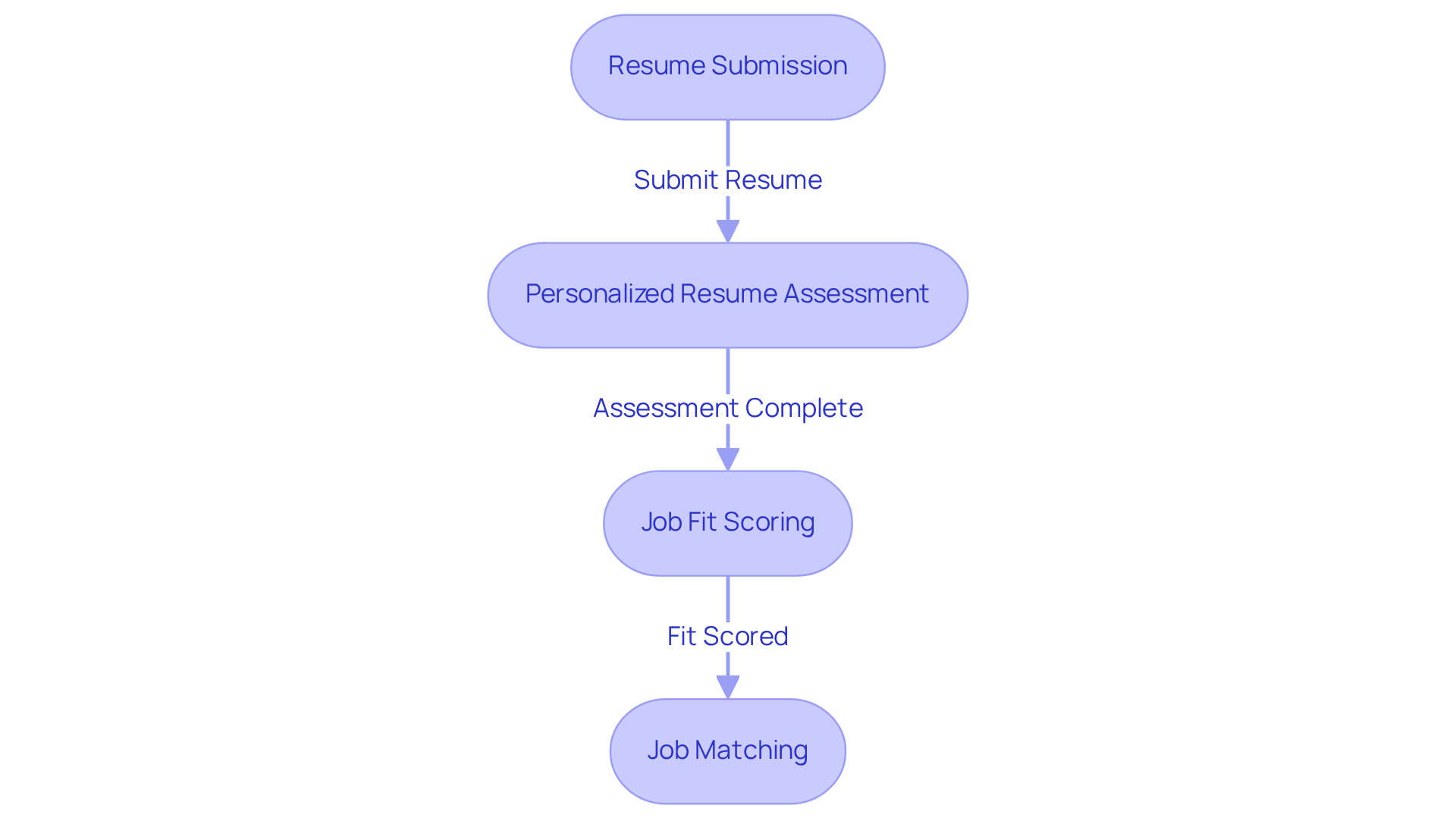
A primary advantage of ABA education lies in its profound impact on . Research indicates that individuals undergoing ABA therapy experience , with studies revealing that up to 90% of those in early intervention develop functional communication skills. Through , young individuals learn to articulate their needs, interpret verbal and non-verbal cues, and engage in meaningful conversations. Techniques such as modeling and reinforcement are pivotal in teaching effective communication, essential for fostering social interactions and overall development.
Enhanced communication not only fortifies connections with peers and adults but also empowers young individuals to advocate for themselves in various settings. Moreover, a 2018 meta-analysis highlighted that individuals who began early intervention prior to age three experienced an average 17-point increase in IQ scores, underscoring the significance of prompt support. Furthermore, youngsters demonstrated a 65% enhancement in academic performance following ABA therapy, emphasizing the .
Overall, ABA education techniques provide a robust foundation for improving communication, leading to enhanced social participation and independence in youngsters.

is essential for enhancing young people's , empowering them to build and maintain meaningful relationships. Techniques such as role-playing, social stories, peer modeling, and Natural Environment Training (NET) are essential in teaching youngsters . NET encourages young individuals to apply their skills in everyday situations, reinforcing their understanding in real-life contexts. These strategies not only elucidate social norms but also promote vital behaviors such as:
Furthermore, bolsters consistency in reinforcing these skills, which is crucial for achieving successful outcomes. Consequently, in their social interactions, leading to improved friendships and a stronger sense of belonging within their communities. Recent studies reveal that young individuals engaged in sustained , particularly those receiving 36 hours or more of therapy weekly, demonstrate significant advancements in social competence and adaptive skills, further highlighting the transformative impact of ABA education practices.
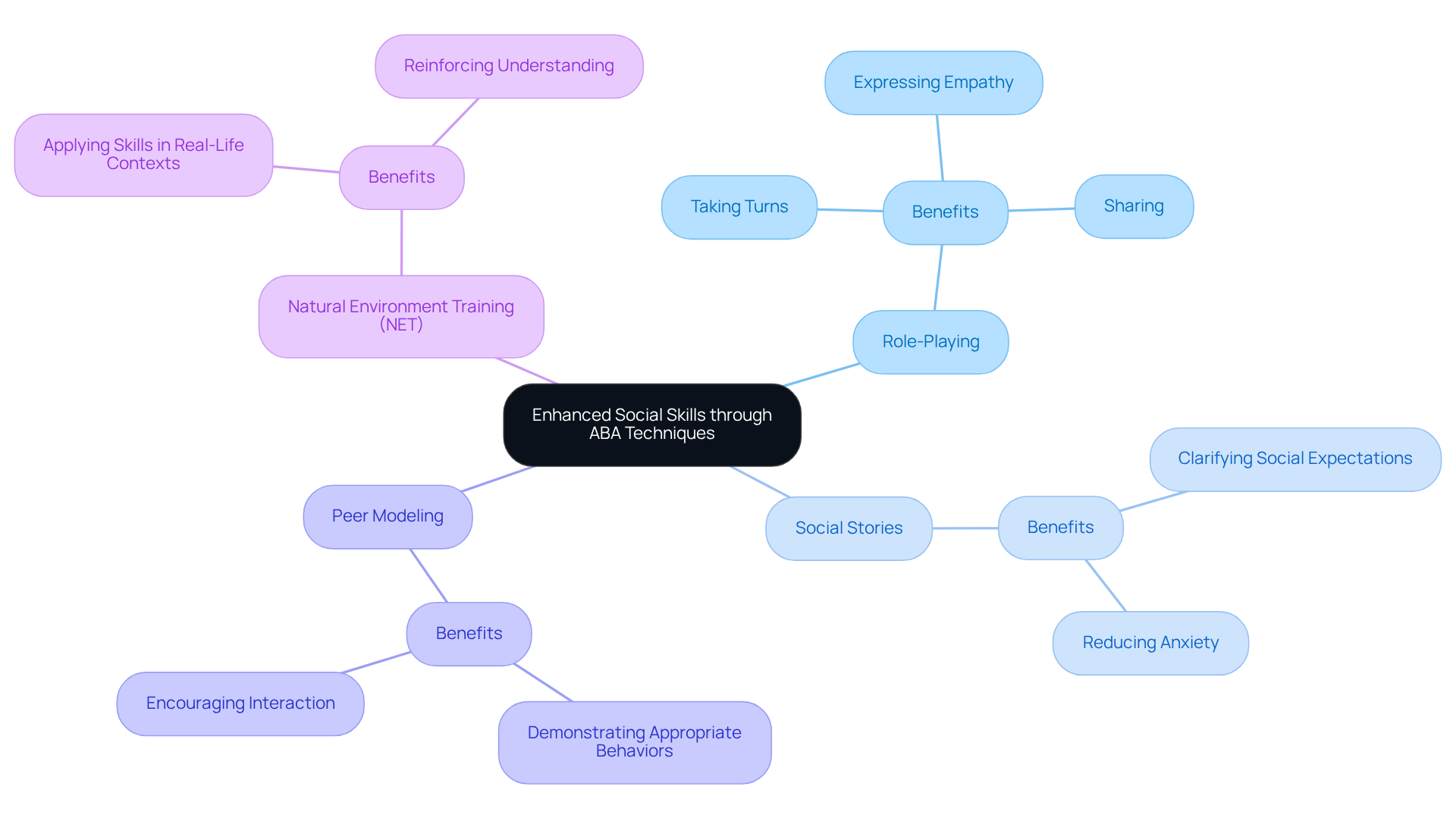
is a cornerstone of , playing a critical role in cultivating . By rewarding desired behaviors with praise, tokens, or other incentives, young individuals learn to associate positive outcomes with their actions.
Remarkably, research indicates that 90% of individuals exhibit significant progress when caregivers are actively engaged in ABA therapy, underscoring the effectiveness of this approach. Consistent reinforcement not only encourages the repetition of good behaviors but also diminishes challenging behaviors over time.
Consider the impact: youngsters who receive frequently develop stronger relational abilities, resulting in enhanced peer connections. Through this method, young individuals cultivate —essential traits for their long-term success.
The structured approach of ABA methods facilitates the gradual development of these abilities, ensuring that youngsters can effectively manage social and educational challenges. As B.F. Skinner, the father of Applied Behavior Analysis, aptly stated, "Teachers must learn how to teach... they need only to be taught more effective ways of teaching."
This foundational principle highlights the importance of in fostering positive behavior. A compelling case study on positive reinforcement in ABA education illustrates how learners receive positive reinforcement for demonstrating useful skills and socially appropriate behaviors, fostering an enjoyable educational atmosphere.
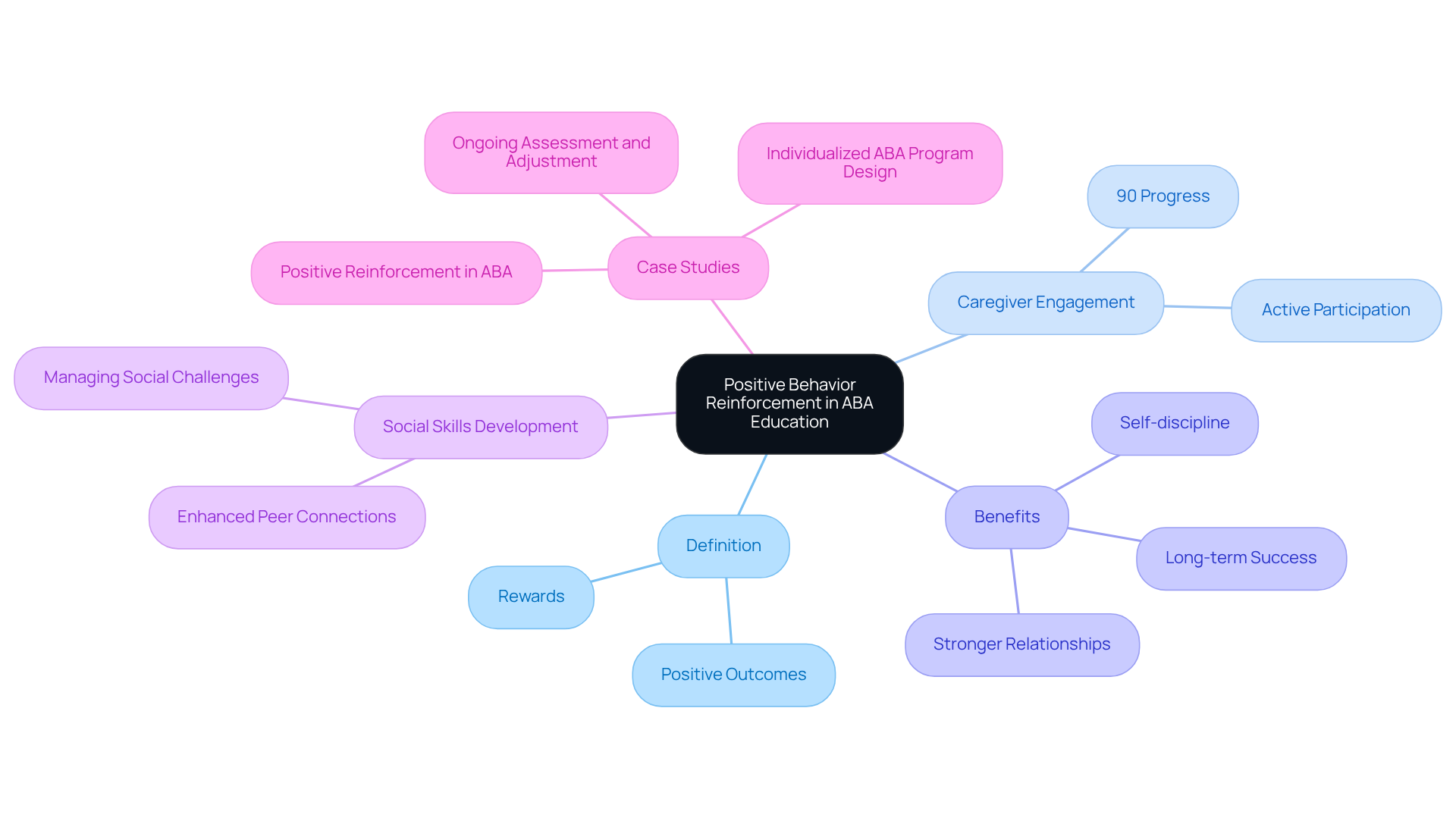
A established by is vital for supporting youngsters' . By implementing , expectations, and , young learners gain a sense of security that enhances their focus on education. This organized approach not only clarifies expectations but also reduces anxiety, fostering active participation in educational activities.
Research indicates that children involved in are more likely to meet their developmental goals, excelling in both academic and social contexts. As Frederick Douglass wisely noted, "It is easier to build strong youth than to repair broken adults," highlighting the importance of .
However, it is essential to strike a balance; excessive structure can hinder exploration and creativity, as children learn most effectively through their own inventions and experiences. By prioritizing organized [ABA education](https://hireaba.today) while allowing for flexibility, ABA education significantly contributes to the growth and development of young individuals.
Healthcare employers can enhance structured routines by incorporating visual schedules and consistent expectations in their practices, ensuring that young people thrive in a .
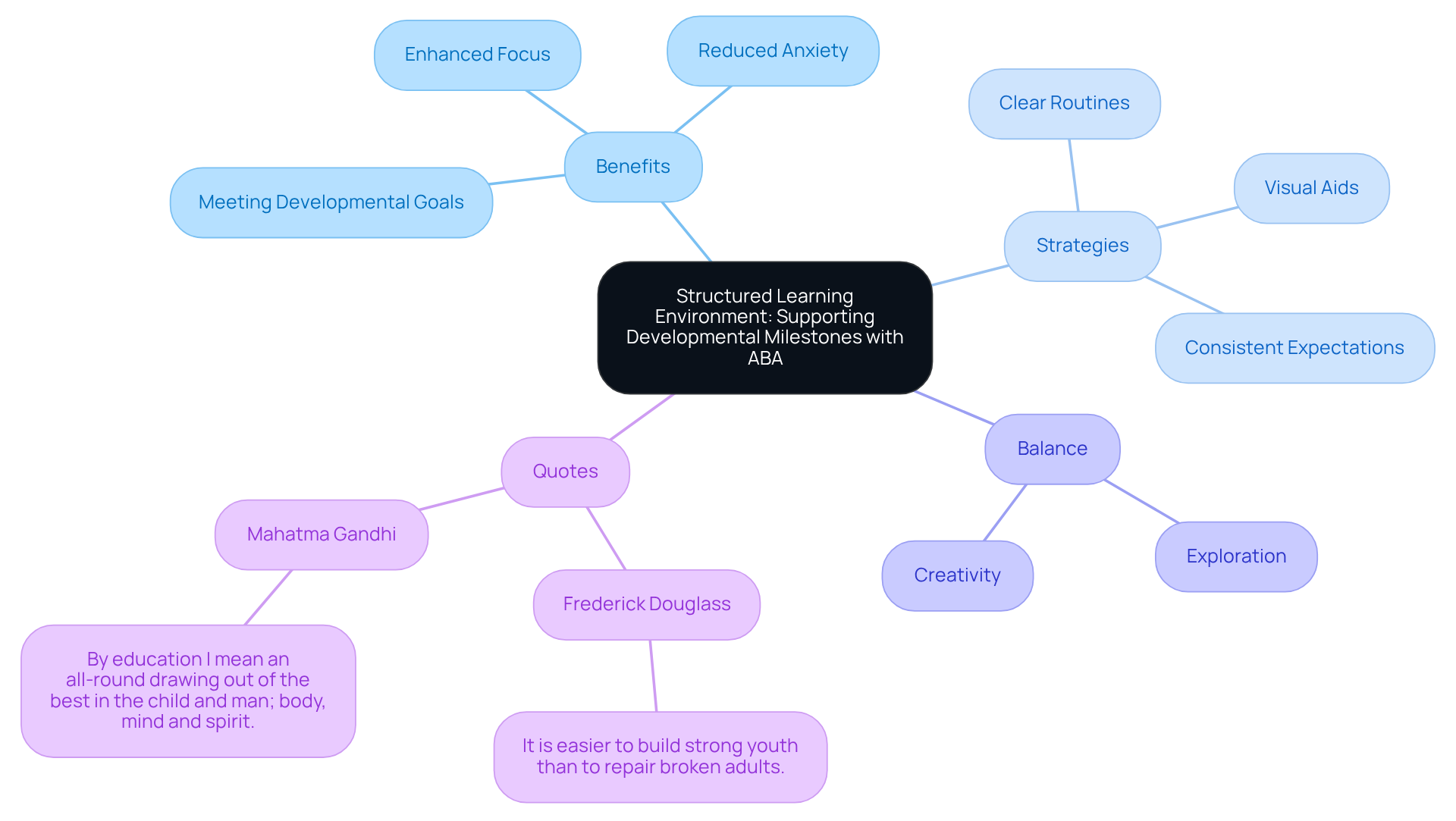
are essential to , as they are meticulously crafted to address each student's unique needs. These plans emerge from that examine the individual's strengths, challenges, and interests. By customizing interventions, , facilitating meaningful skill acquisition. This tailored approach not only enhances engagement but also fosters a sense of ownership in the educational process through ABA education, .
Research indicates that students in experience a remarkable 30% increase in engagement and a 15% improvement in retention rates. Furthermore, schools implementing personalized educational strategies report a 12% increase in attendance and a 15% decrease in dropout rates, illustrating the significant impact of in promoting positive outcomes for youth utilizing ABA strategies. Additionally, companies that employ adaptive learning methods achieve 14% greater productivity compared to traditional teaching methods, underscoring the broader implications of personalized learning strategies.
As Stephen Shore aptly stated, 'If you’ve met one person with autism, you’ve met one person with autism,' highlighting the to meet .
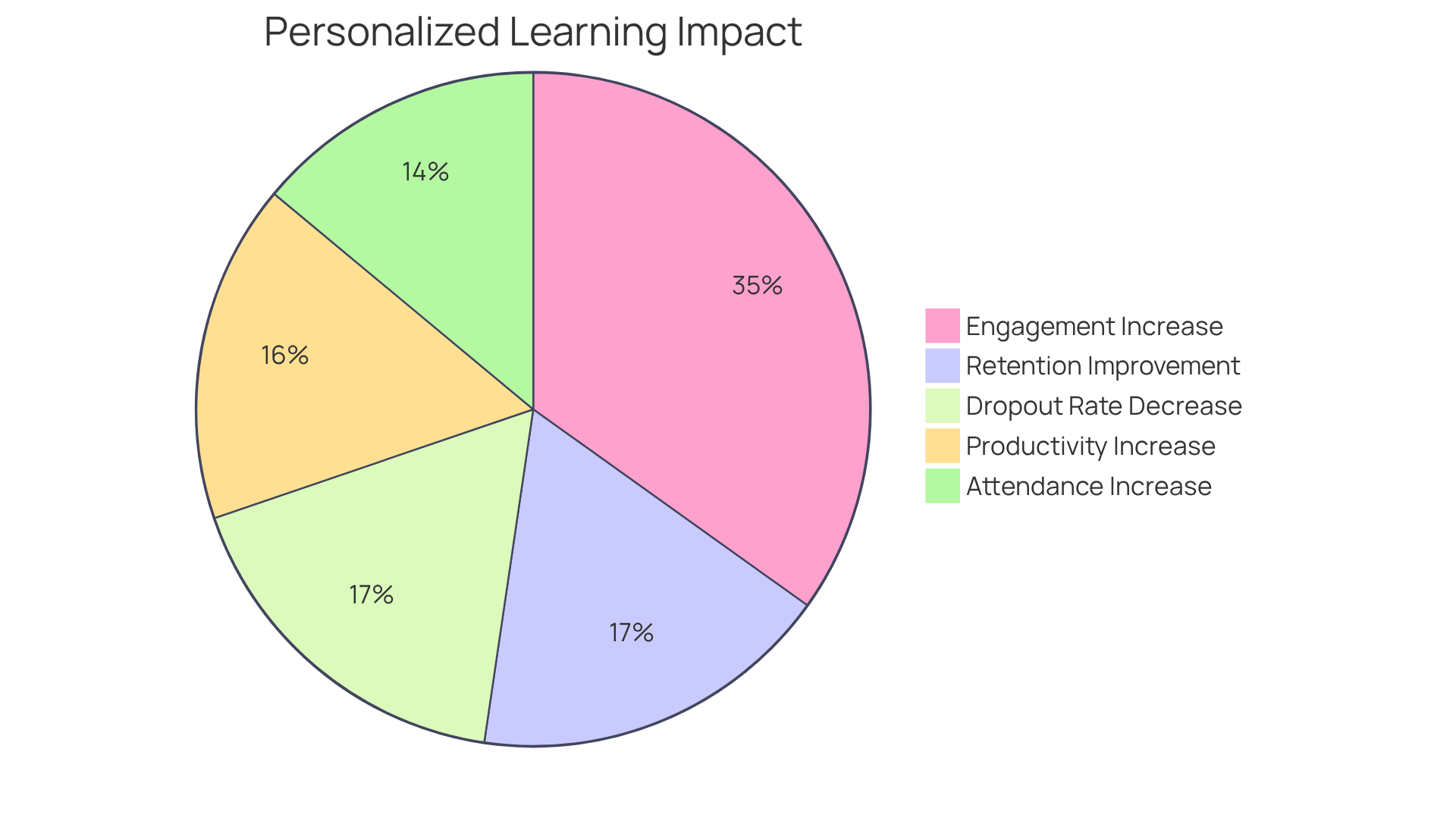
is essential in , enabling educators to assess students' development through . By systematically gathering and analyzing data on diverse skills and behaviors, educators can identify trends, track progress, and make informed decisions regarding interventions. This method ensures that each student's learning is continuously assessed and allows for , significantly enhancing the effectiveness of outcomes.
Research shows that individuals receiving ABA interventions can experience notable , with studies indicating reductions in challenging behaviors by over 30% following the consistent application of these metrics, as highlighted by Smith et al. (2019). Furthermore, efficient progress tracking fosters ; consistent updates and transparent communication help parents understand their children's advancements and challenges. As a result, youngsters are more likely to achieve their educational goals, underscoring the in their growth.
Additionally, in ABA education facilitates prompt modifications to treatment plans, ensuring that interventions are tailored to each individual's unique needs and objectives.
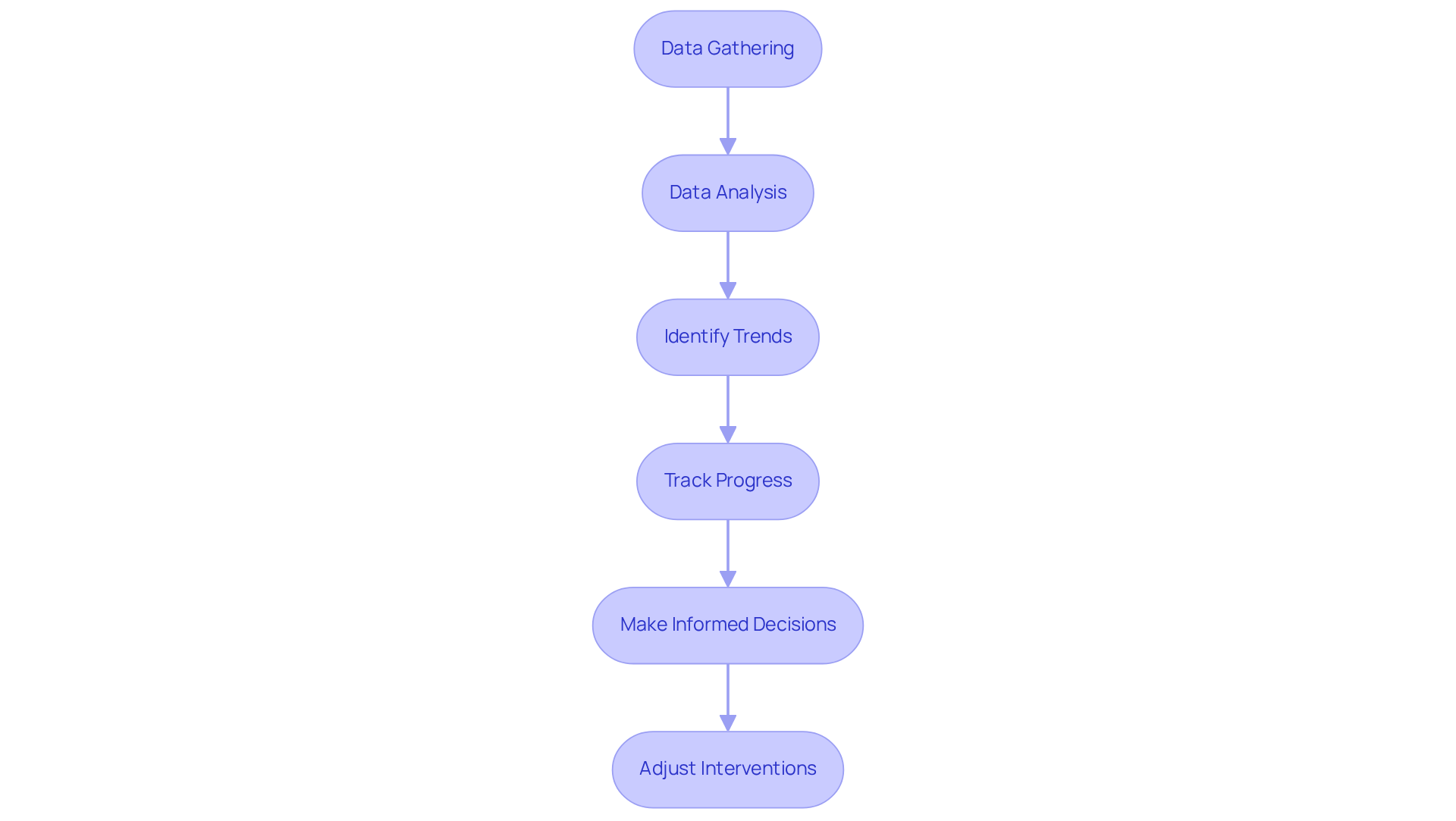
A collaborative approach in is essential for fostering , all striving towards shared objectives. Did you know that when families actively participate in the ABA education therapy process, young individuals experience significantly improved outcomes? Research shows that 90% of these individuals demonstrate with caregiver involvement. among these stakeholders not only improve the consistency of interventions across different environments but also empower families to with ABA education.
Furthermore, statistics reveal that 74% of autistic students graduate with a diploma, compared to 86% of their non-autistic peers. This disparity underscores the critical role of . By integrating insights from educators about student behavior, strategies can be tailored to meet individual needs, further enhancing the effectiveness of interventions. This synergy creates a more cohesive and supportive learning environment, ultimately benefiting the individual's overall ABA education experience.
that aids the academic and social development of individuals with developmental challenges through ABA education. To implement these effectively, among families, educators, and therapists are recommended. This ensures that all parties remain aligned in their efforts, creating a unified front that champions the success of every student.

equips young learners with essential skills that pave the way for . It emphasizes —skills that are crucial for navigating academic challenges. Research indicates that children engaged in demonstrate significant improvements in these areas, which are vital for managing educational difficulties.
For example, into manageable steps, fostering independence and confidence in their abilities. Furthermore, the emphasis on communication and interpersonal skills cultivates , thereby enhancing the overall learning experience.
As a result, those who participate in ABA education are not only better prepared to tackle future academic obstacles but are also more likely to . This holistic approach ensures that the are applicable in various contexts, underscoring the importance of in supporting .

in are essential for ensuring quality and integrity in development. must adhere to a stringent code of ethics, including the established in 2017, which underscores the dignity and rights of clients. This includes:
By emphasizing ethical considerations, ABA education professionals can foster trust with families and cultivate a safe, supportive learning environment in the context of ABA education. Furthermore, , as highlighted by Fong et al. (2016), is essential for ethical practice. It is also crucial to acknowledge the with ABA education, which reinforces the necessity of ethical standards in promoting positive outcomes. This unwavering commitment to not only enhances the effectiveness of interventions but also supports positive developmental outcomes for children and their families.
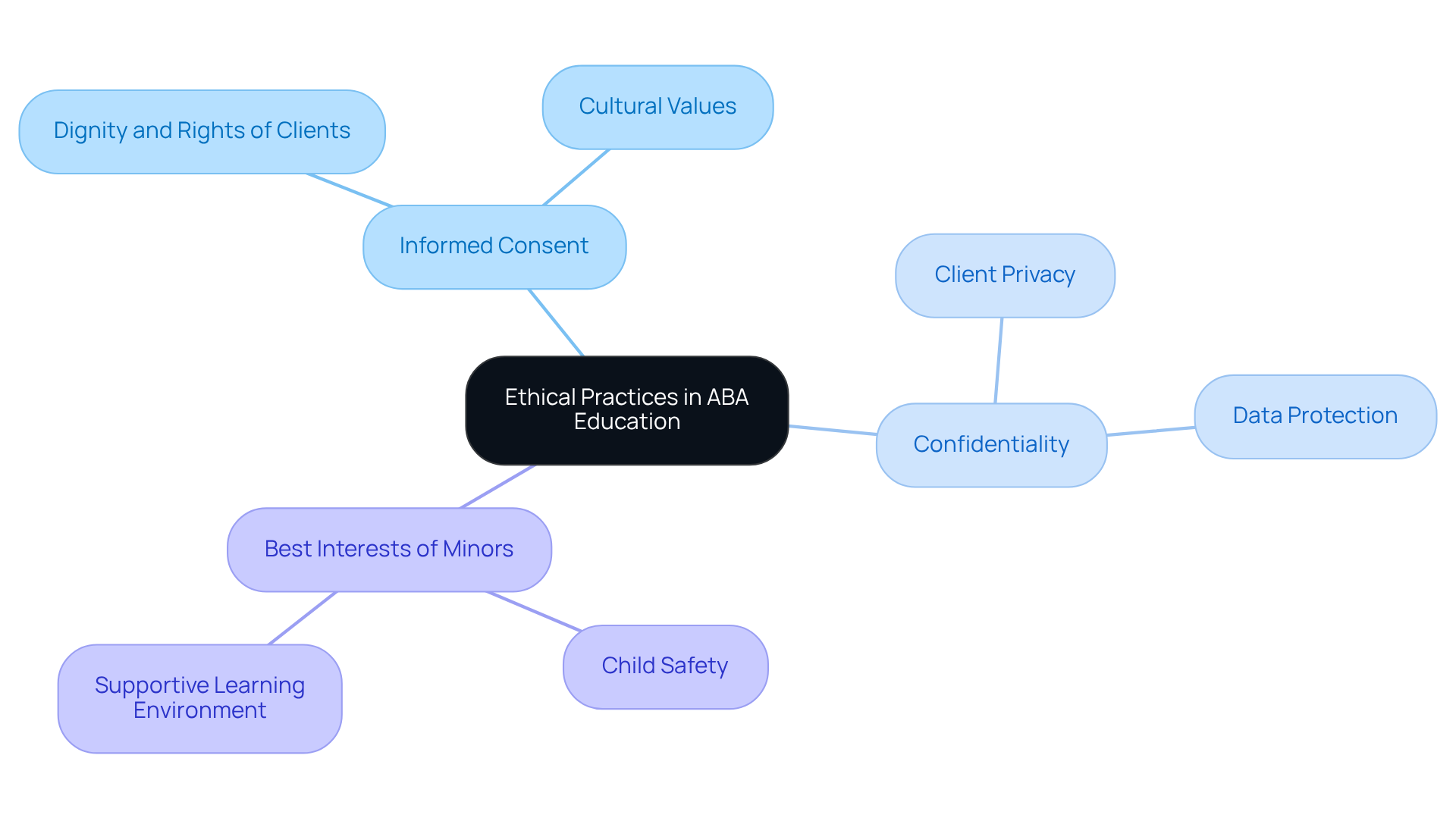
The benefits of ABA education for child development are profound and multifaceted, offering essential tools that foster growth in communication, social skills, and overall academic success. By employing structured methodologies and individualized learning plans, ABA education empowers children to navigate their developmental challenges effectively, ensuring they are equipped for future endeavors.
Throughout the discussion, key insights highlight the importance of positive behavior reinforcement, the establishment of structured learning environments, and the collaborative efforts of families and educators. These elements work in tandem to create a supportive atmosphere where children can thrive, demonstrating significant improvements in their abilities and confidence. Moreover, the ethical practices inherent in ABA education ensure that interventions are not only effective but also respectful of each child's dignity and rights.
In reflection, the significance of ABA education cannot be overstated. It serves as a vital resource for enhancing child development and preparing young individuals for lifelong success. Embracing the principles of ABA and advocating for its implementation can pave the way for a brighter future for children, ensuring they have the skills and support necessary to flourish in an ever-changing world.
What is Hire ABA and what role does it play in the job market for BCBAs?
Hire ABA is a service that connects Board Certified Behavior Analysts (BCBAs) with job opportunities in the field of Applied Behavior Analysis (ABA) therapy. It simplifies the recruitment process and enhances the experience for candidates through personalized resume assessments.
How much is the demand for BCBAs expected to grow?
The demand for BCBAs is projected to surge by 25% by 2026. Job postings for BCBAs have increased significantly, totaling over 65,300 postings in 2023.
How does Hire ABA enhance the job matching process for BCBAs?
Hire ABA employs advanced job fit scoring to match candidates with opportunities that align with their abilities, preferences, and preferred locations, ensuring a targeted approach to job matching.
What are the benefits of ABA education in terms of communication skills?
ABA education significantly enhances communication abilities, with studies showing that up to 90% of individuals in early intervention develop functional communication skills. Techniques like modeling and reinforcement help individuals articulate their needs and engage in meaningful conversations.
How does early intervention in ABA therapy impact IQ and academic performance?
A 2018 meta-analysis indicated that individuals who began early intervention before age three experienced an average 17-point increase in IQ scores. Additionally, youngsters showed a 65% enhancement in academic performance following ABA therapy.
What techniques are used in ABA education to improve social skills?
Techniques such as role-playing, social stories, peer modeling, and Natural Environment Training (NET) are used to teach effective interaction methods and promote behaviors like taking turns, sharing, and expressing empathy.
How does family involvement affect the outcomes of ABA therapy?
Family involvement in ABA therapy reinforces the skills learned, contributing to consistency and successful outcomes for young individuals in developing their social abilities.
What are the effects of sustained ABA education interventions on social competence?
Young individuals engaged in sustained ABA education interventions, particularly those receiving 36 hours or more of therapy weekly, demonstrate significant advancements in social competence and adaptive skills.
Our expert recruitment strategies and AI-driven sourcing ensure that you receive top-notch candidates quickly, without compromising on quality. Whether you’re looking for BCBAs, Clinical Directors, or RBTs, we’ve got you covered.